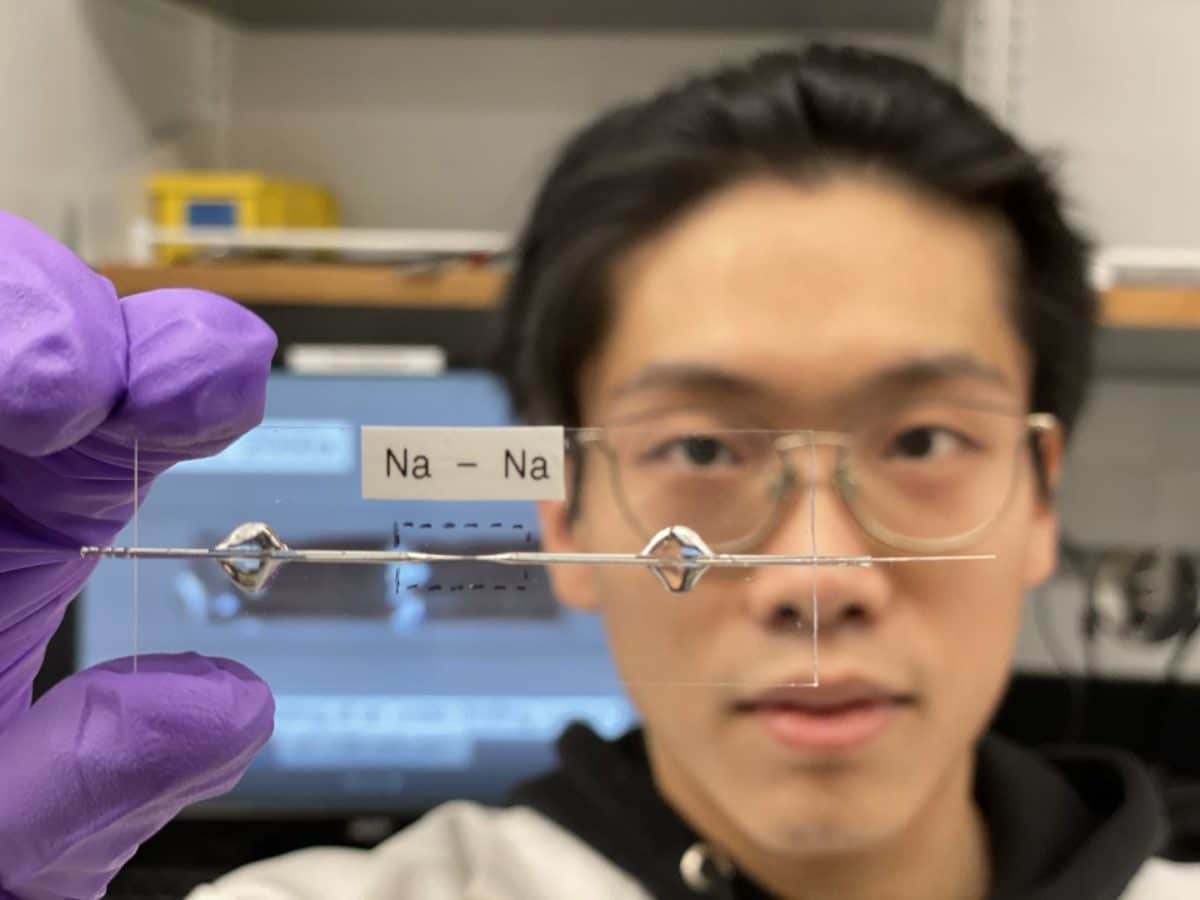Anode-free batteries, or those incorporating alkali-metal anode materials, present one of the many possible pathways to improvement in battery technology. This type of battery though tends to show serious issues with stability, and the formation of dendrites quickly leads to short-circuiting or heavy performance loss.
Solid-state batteries, most often incorporating lithium-metal anodes are being heavily investigated as a solution to this. However, scientists led by Washington University in St. Louis (WUS) working with a liquid-electrolyte-based sodium-ion battery have demonstrated a new approach that allowed them to fabricate a working anode-free battery that showed impressive stability. “…the problem has been, with this well-known chemistry, no one ever showed this anode-free battery can have a reasonable lifetime,” explained WUS assistant professor Peng Bai. “They always fail very quickly or have a very low capacity or require special processing of the current collector.”
The battery designed at WUS is described in the paper Dynamic Interfacial Stability Confirmed by Microscopic Optical Operando Experiments Enables High‐Retention‐Rate Anode‐Free Na Metal Full Cells, published in Advanced Science. It comprised a copper foil current collector at the anode side, a sodium-vanadium-based cathode, and a sodium-fluorophosphate liquid electrolyte.
The battery achieved a capacity retention rate of 99.93% per cycle. “In our discovery, there are no dendrites, no finger-like structures,” said Bingyuan Ma, the paper’s lead author. “This kind of growth mode has never been observed for this kind of alkali metal.”
Dry and transparent
The group attributed its success at least in part to a longer drying process for the electrolyte, and minimizing its water content, noting that this is not often treated as a primary concern in battery research. “Water content must be lower than 10 parts-per-million,” said Bai.
The group was also able to make better observations on the mechanisms at work in the battery by designing what it calls a transparent capillary cell. This enabled them to more easily observe the cells in operation, where much earlier research has relied on taking batteries apart after the fact in order to work out what happened to them. “What really matters is instability during the dynamic process, and there's no method to characterize that,” added Bai. “We could clearly see that if you don't have good quality control of your electrolyte, you'll see various instabilities, including the formation of dendrites.”
The group says its research should overturn much of the earlier perceived wisdom on anode-free battery designs, and that future research could be extended to the growth of other metal anodes in liquid electrolyte batteries. “Our work proved the possibility and significance to achieve the ideal interfacial stability of an alkali metal in liquid electrolytes,” they concluded.
This content is protected by copyright and may not be reused. If you want to cooperate with us and would like to reuse some of our content, please contact: editors@pv-magazine.com.




Washington University in St Louis is abbreviated as WUSTL, not as WUS.
After coming across the article ((Mark Hutchins) article: A stable sodium battery, without the anode); I wanted to touch base and indicate I am developing a new energy storage technology and recently observed I need not have a convectional anode or cathode. I also observed significant retained / recovered capacity when load was removed. This discovery exhibits negligible degradation and rapid if not instantaneous charging (small cells). I am in the process of establishing energy density, and feel this novel architecture and electrolyte configuration will be a significant change in energy storage.